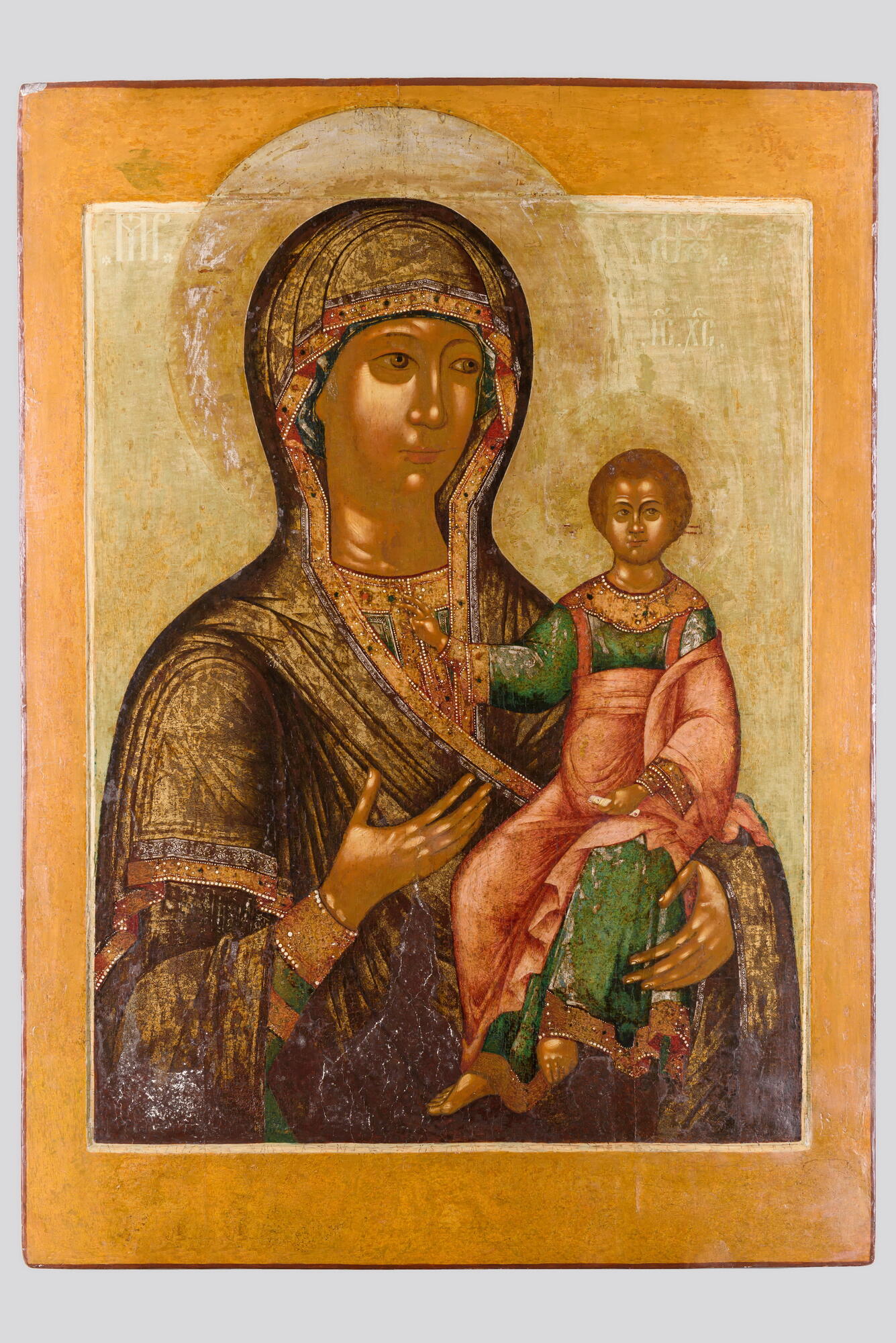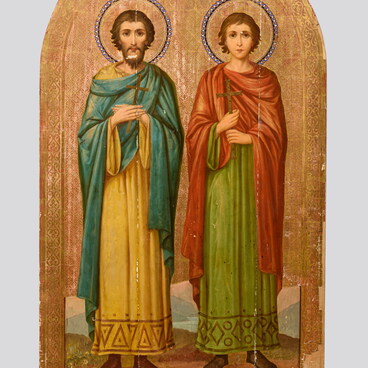The Mother of God of Smolensk belongs to one of the oldest iconographic types — Hodegetria, or Our Lady of the Way. This is evidenced by the church tradition, according to which the first Hodegetria icon was painted by the apostle and evangelist Luke during his communion with the Theotokos. This is also confirmed by the research of the historian of Byzantine and Old Russian iconography Nikodim Pavlovich Kondakov.
Just like the Tikhvin and Kazan images of the Theotokos, as well as some other types, the Smolensk icon was copied from the ancient original.
The iconographic canon of Hodegetria was formed in Palestine or Egypt in or before the 4th century.
In the mid-5th century, the wife of Emperor Theodosius the Younger, Eudoxia, brought the icon from the Holy Land to Constantinople and presented it to her husband’s sister Pulcheria. The latter built a temple on the seashore and ordered to hold a procession around the city with the shrine on a weekly basis.
In the 11th century, Emperor Constantine IX blessed the marriage of his daughter Tsarevna Anna and Prince Vsevolod Yaroslavich of Chernigov with this miraculous image. Prince Vladimir Monomakh inherited the icon and ordered it to be moved to the main church of the Assumption Cathedral of the Blessed Virgin Mary in Smolensk. Thus, the icon acquired its second name — the Mother of God of Smolensk.
Presumably, the presented icon was painted by a Balakhna master. References to Balakhna icon painters are quite rare, however, in the record of 1660, the Balakhna painters Erast Prokofiev, Emelyan Tetyukhin, and Andrey, Nikita and Grigory Terentyevs are named along with the famous Nizhny Novgorod icon painters, such as Simon Ushakov. The researcher Nikolay Filatov even suggested that there was an independent Balakhna icon painting school in the mid-17th century.
The Mother of God and Jesus are depicted in festive clothes decorated with a gold trim and precious stones. The Baby sits on the Mother’s left arm as on a throne, the hem of the himation falls from His left shoulder like a mantel. The closeness of the figures of Mother and Son indicates their unity and also symbolizes the unity between the Heavenly Church (Christ) and the Earthly Church (Mary).
The scroll in Jesus’ left hand can be interpreted in many different ways: it is both the Book of life, destinies and human sins, and an allegory of the Mother of God as a perfect Book in which the Word of God is inscribed, and this Word itself.
Thus, the three images — the Virgin, Christ and the scroll — are intertwined into a single figurative and symbolic circle.
The icon was taken to the Local History Museum of Balakhna for permanent storage in 1948; it was restored in 1990.
Just like the Tikhvin and Kazan images of the Theotokos, as well as some other types, the Smolensk icon was copied from the ancient original.
The iconographic canon of Hodegetria was formed in Palestine or Egypt in or before the 4th century.
In the mid-5th century, the wife of Emperor Theodosius the Younger, Eudoxia, brought the icon from the Holy Land to Constantinople and presented it to her husband’s sister Pulcheria. The latter built a temple on the seashore and ordered to hold a procession around the city with the shrine on a weekly basis.
In the 11th century, Emperor Constantine IX blessed the marriage of his daughter Tsarevna Anna and Prince Vsevolod Yaroslavich of Chernigov with this miraculous image. Prince Vladimir Monomakh inherited the icon and ordered it to be moved to the main church of the Assumption Cathedral of the Blessed Virgin Mary in Smolensk. Thus, the icon acquired its second name — the Mother of God of Smolensk.
Presumably, the presented icon was painted by a Balakhna master. References to Balakhna icon painters are quite rare, however, in the record of 1660, the Balakhna painters Erast Prokofiev, Emelyan Tetyukhin, and Andrey, Nikita and Grigory Terentyevs are named along with the famous Nizhny Novgorod icon painters, such as Simon Ushakov. The researcher Nikolay Filatov even suggested that there was an independent Balakhna icon painting school in the mid-17th century.
The Mother of God and Jesus are depicted in festive clothes decorated with a gold trim and precious stones. The Baby sits on the Mother’s left arm as on a throne, the hem of the himation falls from His left shoulder like a mantel. The closeness of the figures of Mother and Son indicates their unity and also symbolizes the unity between the Heavenly Church (Christ) and the Earthly Church (Mary).
The scroll in Jesus’ left hand can be interpreted in many different ways: it is both the Book of life, destinies and human sins, and an allegory of the Mother of God as a perfect Book in which the Word of God is inscribed, and this Word itself.
Thus, the three images — the Virgin, Christ and the scroll — are intertwined into a single figurative and symbolic circle.
The icon was taken to the Local History Museum of Balakhna for permanent storage in 1948; it was restored in 1990.


